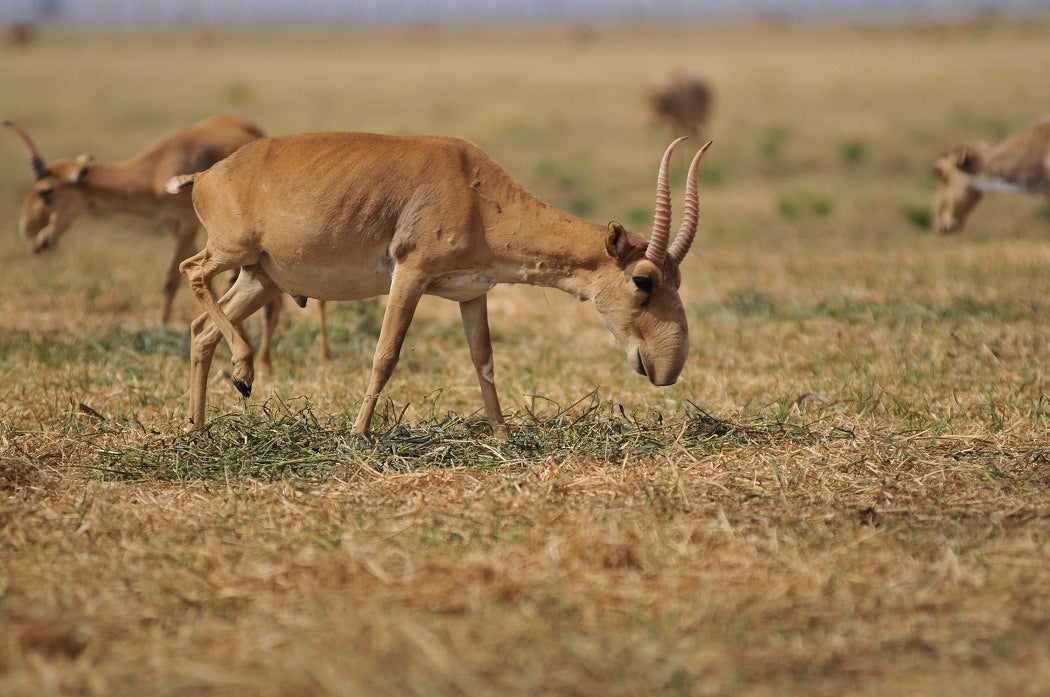In Kazakhstan, saiga antelope are dying by the thousands, and nobody knows precisely why. The saiga, which resembles a cross between a gazelle and a tapir, is an iconic animal of central Asia. The die-off has claimed up to 30,000 animals and counting.
Speculation about the cause ranges from an infectious disease to contamination from Russian rocket launches. While the inability to find a cause is frustrating, natural die-off events are not unprecedented, especially in antelopes.
In 1964, a mass die-off (over 60% of the population) occurred in a small population of pronghorn antelope in Trans-Pecos, Texas. Pronghorn antelope populations dwindled throughout the West until the first part of the 20th century, at which point many were moved into large—tens or hundreds of thousands of acres—fenced enclosures for their protection. The pronghorn often shared these spaces with cattle or other livestock, and it was under such circumstances that the 1964 event occurred.
The problem was that the Trans-Pecos area, while large, was not large enough for both antelope and livestock, and the animals quickly ate all the edible plants. The pronghorn, out of desperation, began to feed on a toxic plant called tarbush. The tarbush poison led to reduced reproduction and poor outcomes for foals, resulting in the population crash. While the tarbush was the immediate cause, the underlying problem was just overgrazing.
Natural die-offs are common enough that there is a technical definition of a die-off. According to a 1994 review, any event which results in at least a 25% population decline is considered a die-off. There are trends in these grim events; most rarely wipe out an entire population. Herbivore die-offs tend to result from starvation while carnivore die-offs are more often due to disease.
The starvation events in herbivores were usually a result of drought, with hard winters accounting for most other mass herbivore die-offs, but nearly 20% remain unsolved. Among carnivores, marine mammals were particularly vulnerable to die-offs.
The good news is that many populations can rebound from a catastrophic loss relatively fast, especially when starvation is the cause. Many animals, like the saiga, live in harsh, variable environments and are geared reproduce quickly when conditions improve. Something similar has already happened with the saiga during a previous incident some years ago. The trouble, of course, is that while a die-off event alone will probably not eliminate a population, these events never happen in isolation. The saiga, for example, is also under threat from poaching, habitat encroachment, and migration disruption, and it is the combination of factors that concerns conservationists. With any luck, this event will quickly run its course and allow the saiga to bounce back.







